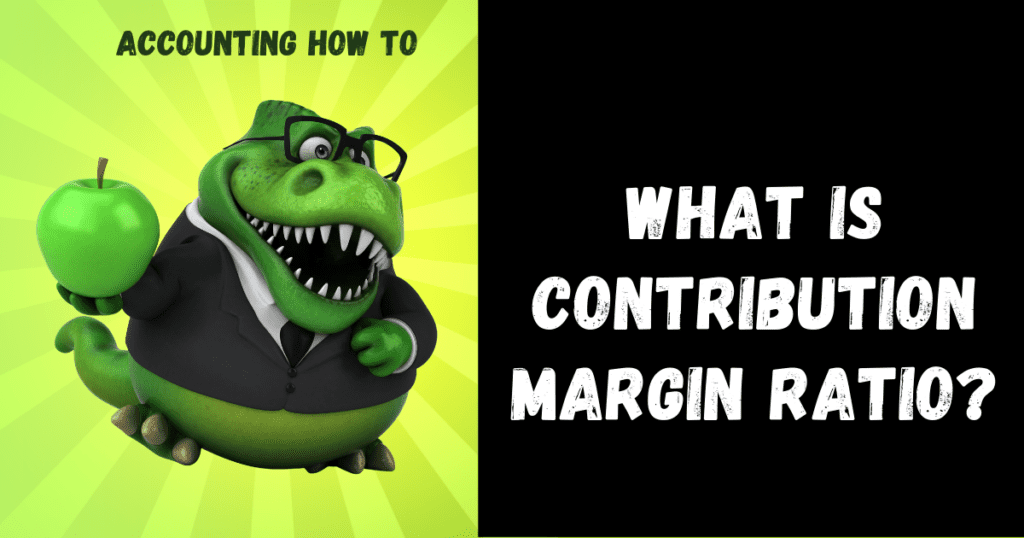However, it may be best to avoid using a contribution margin by itself, particularly if you want to evaluate the financial health of your entire operation. Instead, consider using contribution margin as an element in a comprehensive financial analysis. A negative contribution margin tends to indicate negative performance for a product or service, while a positive contribution margin indicates the inverse.
Contribution Margin: What Is It and How To Calculate It
Looking at contribution margin in total allows managers to evaluate whether a particular product is profitable and how the sales revenue from that product contributes to the overall profitability of the company. In fact, we can create a specialized income statement called a contribution margin income statement to determine how changes in sales volume impact the bottom line. Using this metric, the company can interpret how one specific product or service affects the profit margin. The fixed cost like rent of the premises, salary, wages of laborers, etc will remain the same irrespective of changes in production. So it is necessary to understand the breakup of fixed and variable cost of any production process.
Contribution margin compared to gross profit margin
The calculation assesses how the growth in sales and profits are linked to each other in a business. If you were to manufacture 100 new cups, your total variable cost would be $200. However, you have to remember that you need the $20,000 machine to make all those cups as well. To run a company successfully, you need to know everything about your business, including its financials.
Everything You Need To Master Financial Modeling
Prior to publication, articles are checked thoroughly for quality and accuracy. Once upon a time, I was just like you – staring wide-eyed at financial documents, wondering why they couldn’t just be in plain English. “Contribution Margin” sounded more like a charity event to me than a financial metric.
Variable cost
A high margin means the profit portion remaining in the business is more. It may turn out to be negative if the variable cost is more that the revenue can cover. Use contribution margin alongside gross profit margin, your balance sheet, and other financial metrics and analyses. This is the only real way to determine whether your company is profitable in the short and long term and if you need to make widespread changes to your profit models. Contribution margins are often compared to gross profit margins, but they differ. Gross profit margin is the difference between your sales revenue and the cost of goods sold.
- The contribution margin ratio for the birdbath implies that, for every \(\$1\) generated by the sale of a Blue Jay Model, they have \(\$0.80\) that contributes to fixed costs and profit.
- A negative contribution margin tends to indicate negative performance for a product or service, while a positive contribution margin indicates the inverse.
- One way to express it is on a per-unit basis, such as standard price (SP) per unit less variable cost per unit.
- We will find out the break-even point by using the concept of contribution.
- At a contribution margin ratio of \(80\%\), approximately \(\$0.80\) of each sales dollar generated by the sale of a Blue Jay Model is available to cover fixed expenses and contribute to profit.
- Well, knowing your contribution margin is like having a GPS for your business.
Contribution Margin Per Unit Formula:
One reason might be to meet company goals, such as gaining market share. Other reasons include being a leader in the use of innovation and improving efficiencies. If a company uses the latest technology, such as online ordering and delivery, this may help the company attract a new type of customer or create loyalty with longstanding customers. In addition, although fixed costs are riskier because they exist regardless of the sales level, once those fixed costs are met, profits grow. All of these new trends result in changes in the composition of fixed and variable costs for a company and it is this composition that helps determine a company’s profit. However, ink pen production will be impossible without the manufacturing machine which comes at a fixed cost of $10,000.
Increase revenue by selling more units, raising product prices, shrinking product size while keeping the same cost, or focusing on selling products with high margins. Investors often look at contribution margin as part of financial analysis to evaluate the company’s health and velocity. Fixed and variable costs are expenses your company accrues from operating the business. In short, profit margin gives you a general idea of how well a business is doing, while contribution margin helps you pinpoint which products are the most profitable. Say a machine for manufacturing ink pens comes at a cost of $10,000.
These ratios provide insight into the overall profitability of a business from different perspectives. The contribution margin is the amount of revenue how to create a business budget in excess of variable costs. One way to express it is on a per-unit basis, such as standard price (SP) per unit less variable cost per unit.

